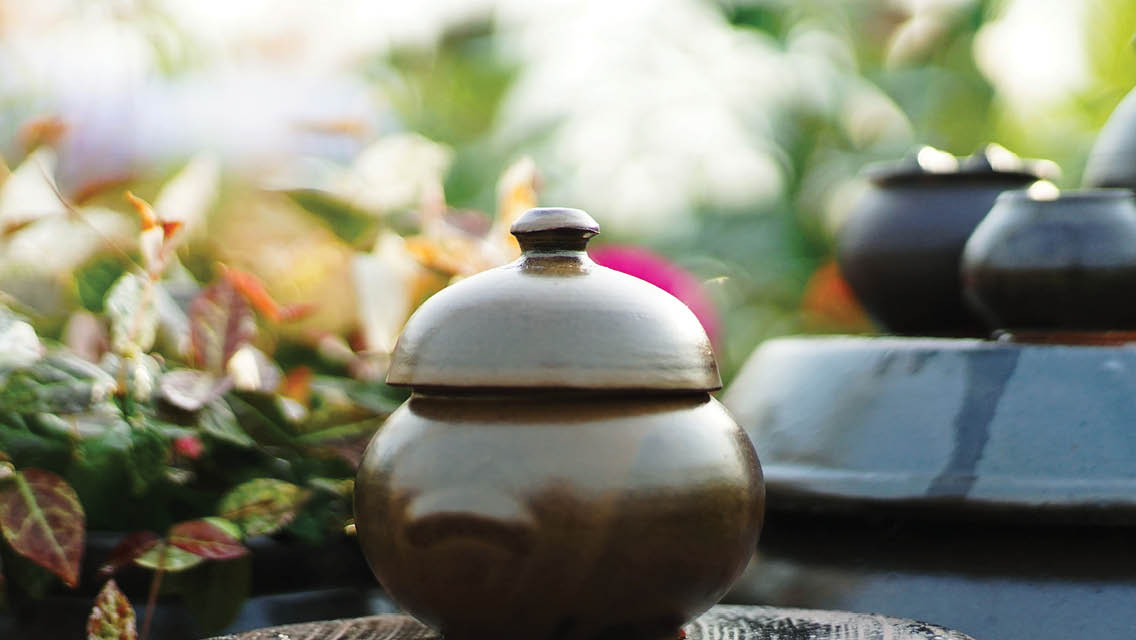Cremated remains, or cremains, are the byproduct of flame and water cremation. They’re composed mainly of crushed bone fragments as well as small amounts of salts and other minerals and, sometimes, pieces of metal.
Cremains are not the person whose body they once made up. And yet, for many of us, cremains are a connection to those we have lost.
“Cremation is a way to get the person back to you,” says mortician Angela Woosley. “It’s easier for us to conceptualize the loss. It can be a comfort.”
“Returning cremated remains to the earth — by scattering them over land or water, or burying them in a biodegradable urn or shroud — is the most natural thing you can do with them. But, Woosley notes, it can also be one of the most difficult acts for some people to take because of its perceived finality.
As a result, it’s common to want to use cremains to memorialize a person and our relationship to them.
If your loved one was an avid home cook, you might choose to keep their ashes in, say, an antique soup tureen. Or, if you do pottery, you might make a ceramic urn to hold their remains. You might want to wear their ashes in a devotion pendant. Or turn the remains into stones that you can carry with you for a time and eventually leave behind in natural spaces.
Other, sometimes exorbitantly expensive, options for cremains include: shooting a tiny amount of them into space, turning them into synthetic diamonds, swirling them into glass art, or incorporating them into tattoos or into a vinyl record.
“These options aren’t necessarily considered green, neither are they necessarily soul-healing,” says sacred deathcare guide Sarah Kerr. “What is important is to choose what is meaningful to you as you adjust to your loss.”
Still, Kerr says, there is no obligation to do anything with the cremains other than return them to the earth. “When we’re conceived, the elements of this dimension start to coalesce around us,” she says. “All our lives, these elements make and remake our bodies. When we die, it’s time for these elements to be returned to the land. The task of our survivors is to fulfill that contract — to put us back into circulation so we can become something else.”
New commercial options can get in the way of that.
Adds Kerr: “If people are not feeling ready to return ashes to the earth, that’s a sign that they may need support and resources and time … in order to get to the place where they can actually let go. Because the person is gone. Holding onto their physical remains can be an attempt to keep them close. Moving forward in grief means transforming your relationship with their physical remains.”
She’s not suggesting that anyone bypass their grief and force the process by disposing of their loved one’s cremains before they’re ready. “There are real reasons why you might not be able to let go yet,” Kerr says. “Ask yourself: How can I get what I need?
“You’ll know what feels true when you find it.”
A Greener Disposition
Discover greener burial and cremation options that honor your values — and your final environmental impact — at “Your Guide to Eco-Friendly Burial and Cremation Options,” from which this article was excerpted.





This Post Has 0 Comments